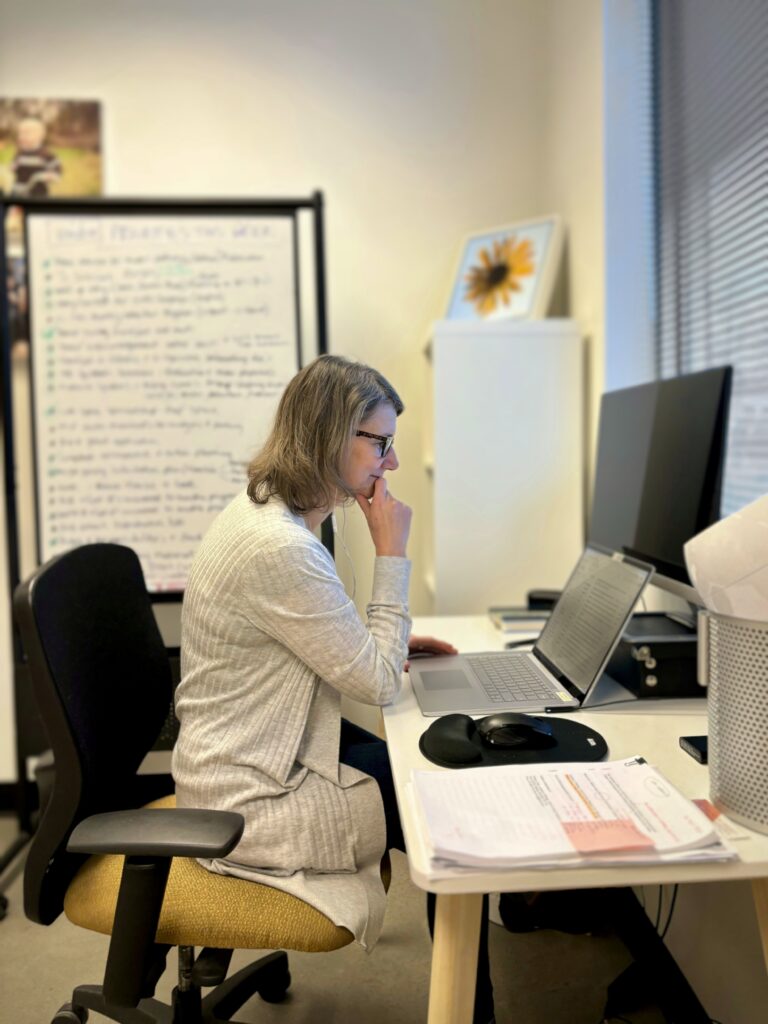cc-TDI welcomed Claire Newman to cc-TDI as a Social Venture Partners Encore Fellow in August 2023. Claire’s role in Operations Scaling and Optimization includes diving into current systems within cc-TDI and providing feedback on ways to implement meaningful change to increase effectiveness and ultimately improve outcomes. Last Wednesday, Claire had the opportunity to participate in cc-TDI’s weekly Megan Bugg Citizen Scientist meeting, which brings patient and family level participation and accountability to a new, strategic approach to developing, testing, and prioritizing new rhabdomyosarcoma drugs for incorporation into cooperative group clinical trials. Claire shares her insights on the complexities below.
In this week’s Megan Bugg Citizen Scientist research program meeting, I had the privilege of witnessing the real-time collaboration between cc-TDI scientists and parents united by a shared goal – finding a cure for rhabdomyosarcoma (RMS), the most common soft tissue sarcoma in children.
The discussion focused on doxycycline, a well-known antibiotic used to treat acne and skin infections, as a potential treatment therapy for rhabdomyosarcoma.
The cc-TDI science team presented their research study results, which involved testing the drug on two cell lines for alveolar RMS (ARMS) and two cell lines for embryonal RMS (ERMS). Positive results were observed in one out of two cell lines at clinically-achievable concentrations. While doxycycline doesn’t represent a cure, early indications (that need a great deal more verification) suggest that doxycycline may, eventually, be able to help slightly extend the life of those affected by a few weeks or even a couple of months. The drug is tolerable with minimal but nonetheless notable side effects.

What struck me most during the meeting was the nuanced decision-making process faced by parents when applying such treatments to children battling RMS. The science team grappled with the question: how many positive results in cell lines would warrant the consideration of this treatment for their kids? The answer is far more complex than a mere numerical value and is deeply rooted in the firsthand experiences of parents navigating the relentless journey of their child’s cancer battle.
Parents attending the meeting shared diverse perspectives, shaped by the unique circumstances of their children’s illnesses. For those whose children endured prolonged suffering during the end stages of their life, the consensus was clear – these parents wouldn’t wish to extend that pain for their child. Parents with children of different ages, some older indicated their child would make decisions based on their individual approach to their illness. One parent expressed a willingness to explore the potential treatment for a chance of gaining additional weeks to a couple of months if their child still had a good quality of life.
The meeting underscored a critical truth – decisions in the realm of pediatric cancer treatment are profoundly complex. This is where the human side intimately intersects with the scientific side. This is not just about numbers or the efficacy of a treatment in a laboratory setting, but rather about understanding the impact on the real lives of children and their families. The Megan Bugg Citizen Scientist research program meeting underscored the delicate balance between hope for scientific advancements and the deeply personal considerations parents face in the pursuit of a better future for their children. In this intersection, heart-wrenching decisions are made, uniting science and humanity in a shared journey toward progress.


